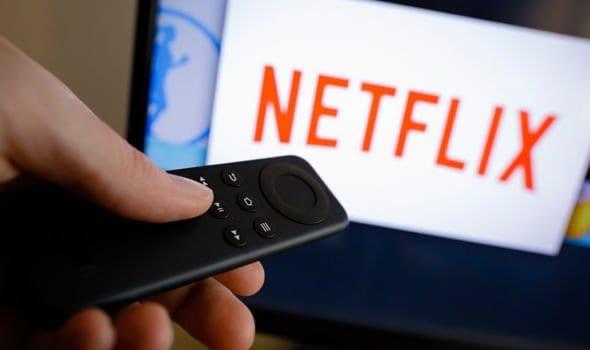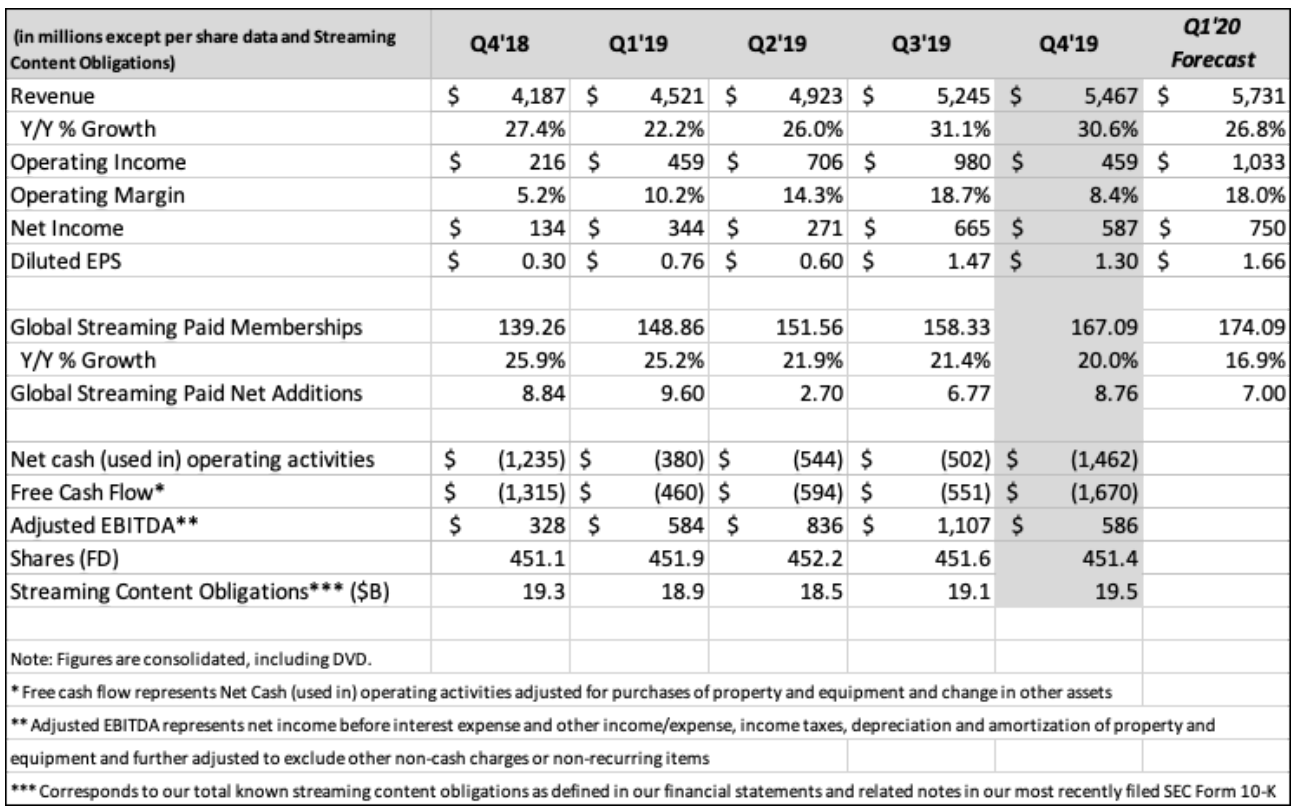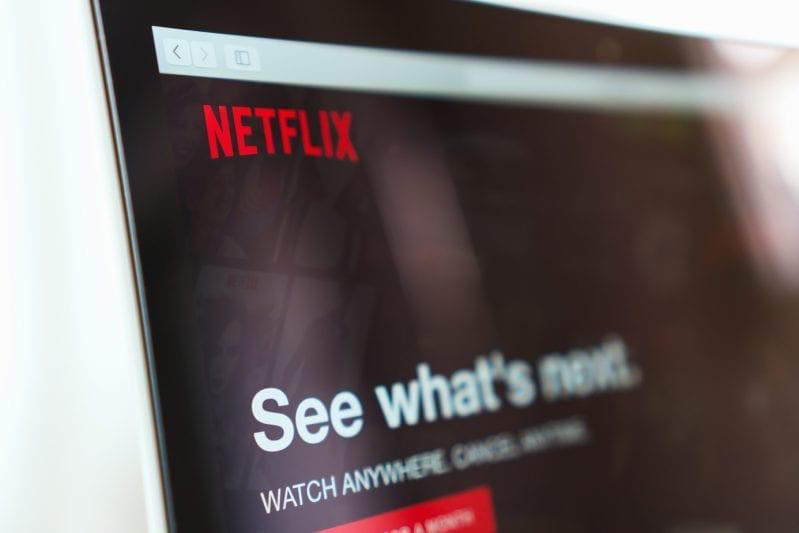Netflix: Creating value in the Covid-19 era
The DVD rental site founded in 1997 had a first-mover advantage when it introduced their streaming service[1] in 2007; three years later they surpassed 20 million subscribers. Today they are reaching 150+ million subscribers and operate in 190 national markets[2].
The company holds substantial market share over competitors (Figure 1) for their innovation capacity within their business model. One of their long-standing strategies has been to better serve their audience taking advantage of their strong network effects. With a continued growing base of subscribers, Netflix has used its data and content library to do recommendations to subscribers and at the same time promote the titles they own to have a higher rotation of their content library. In 2013 they launched their first proprietary series House of Cards, winning their first Emmy Award, enhancing their brand recognition and reputation, and consolidating their sustainability.
They also create value with an easy access service by making itself approachable for new costumers with a simple access subscription, no additional fees (like late fees), fast canceling policy, alliances with streaming devices, offline content download and new original content.
Figure 1
The arrival of Covid-19
Social isolation and lockdowns around the world have had enormous impact in the global economy: disruption of supply chains, demand shocks, laid-off workers, shifts in consumer behavior, many businesses that will need to retool and pivot, and others will be lost.
Netflix has been one of the most demanded digital services during social isolation, so their scalability and sustainability might be projected in their upcoming 2020 Quarterly Earnings with a Covid-19 effect. In 2019 they reported to have “a strong finish to 2019, with Q4 revenue growing 31% year over year bringing full year 2019 revenue to over $20 billion, while FY19 operating income rose 62% to 2.6 billion”[3] (Figure 2), and having last Thursday “its best trading day of the year”[4]—stock climbed 7.24%—in the midst of an unstable market behavior.
Figure 2
Source: Netflix.com
Creative Industries and Crisis Management
Creative Industries are one of the most affected industries from this global pandemic[5]. The Inter-American Development Bank estimates that the creative economy represents 6.1% of the world’s economy[6].
On the 20th of March, Netflix announced[7] a “$100 million fund to help with hardship in the creative community”, that will go to “support for the hardest hit workers on our own productions around the world”, in addition to the two weeks pay committed to crew and cast. To support the broader film and television industry, “$15 million of the fund will go to third parties and non-profits providing emergency relief to out-of-work crew and cast”[8].
The company also contributed alleviating the saturation in the telecommunications, that are seeing an unprecedented demand, so they committed to “reduce Netflix’s traffic by 25%”[9] to ensure the efficient use of the telecommunications networks of their Internet Service Provider (ISP); “the video giant consumes 15% of the total downstream volume of the traffic globally”[10].
Coming out of the Covid-19 era
“Streaming services have a relatively high churn of 18% each year[11]”, in addition to the rising competition, so a strategy to increase the number of free trial subscriptions during the social isolation policy, is a goodwill measure that will translate into brand loyalty. Netflix has an opportunity to enrich their brand value through corporate responsibility; high performance in times like these require high integrity and empathy to the extraordinary needs of the situation, while still providing the best service to all their stakeholders.
By using their vast database and evaluating the new economic behaviors and consumer habits, network-bridging opportunities can happen. We are seeing high demand for educational, ludic and cultural content, as well as shared party content apps, this can open a path to increase their content offer or consider other streaming business units.
The challenge for innovation and adaptation for any business in times like this is pressing. Richard Matheson said in his book I Am Legend: “How quickly one accepts the incredible if only one sees it enough.”
[1] https://s22.q4cdn.com/959853165/files/doc_downloads/cl71_netflix.pdf
[2] https://edition.cnn.com/2019/01/17/media/netflix-earnings-q4/index.html
[3] https://s22.q4cdn.com/959853165/files/doc_financials/2019/q4/FINAL-Q4-19-Shareholder-Letter.pdf
[4] https://www.cnbc.com/2020/01/23/netflix-stock-rises-5percent-just-two-days-after-a-mixed-earnings-report.html
[5] “Netflix Press Release (03/20/20): The Covid-19 crisis is devastating for many industries, including the creative community. Almost all television and film production has now ceased globally – leaving hundreds of thousands of crew and cast without jobs. These include electricians, carpenters, drivers, hair and makeup artists and more, many of whom are paid hourly wages and work on a project-to-project basis.”
[6] https://publications.iadb.org/publications/english/document/The-Orange-Economy-An-Infinite-Opportunity.pdf
[7] https://media.netflix.com/en/company-blog/emergency-support-for-workers-in-the-creative-community
[8] Idem.
[9] https://media.netflix.com/en/company-blog/reducing-netflix-traffic-where-its-needed
[10] https://fortune.com/2018/10/02/netflix-consumes-15-percent-of-global-internet-bandwidth/
[11] https://www.forbes.com/sites/greatspeculations/2019/08/20/all-the-reasons-why-netflix-is-doomed/#65ab4cd0465e







